Kalina Salvador: An Abundance of Strength Begins With a Breath
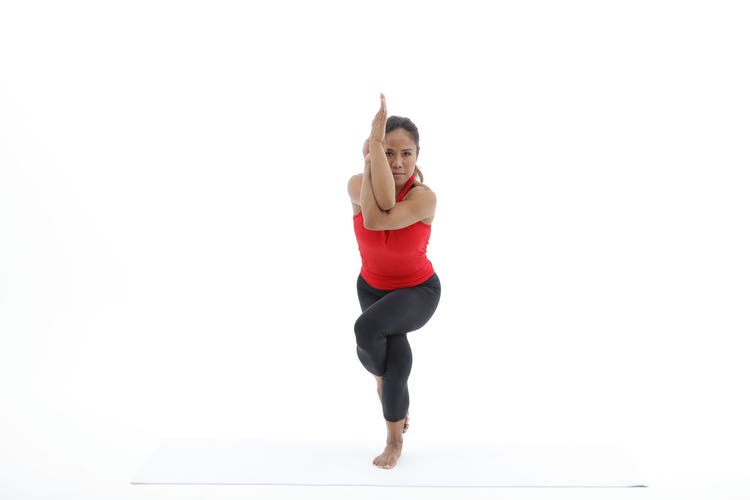
After a week of high fever and convulsions that left her unable to grip anything in her hands, Kalina Salvador said a prayer from her hospital bed: If she recovered, she would find a way to give back.
Doctors speculated that she might suffer from lupus, but Salvador was given the diagnosis of an unnamed autoimmune disease similar to arthritis—the result of her body’s severe reaction to an indeterminate virus. At the news that she would have to manage this condition for life, the young mother of two slipped deeper into depression.
Then Salvador remembered the promise she made in the hospital.
A few weeks later, walking painfully on crutches and struggling simply to breathe normally, she decided to take a yoga class at 24 Hour Fitness. She loved them and the process and progress she was making. So Salvador decided to get certified as a yoga instructor.
Today, Salvador continues to teach yoga at 24 Hour Fitness and also works with clients as a personal trainer. 24Life recently asked what she learned from her transformation that she shares with others.
Be truthful with yourself

To get herself through the doors of the gym at her lowest point, Salvador says she had to be truthful with herself. “For me, it was understanding I was not capable of doing certain things,” she says. “I had arthritis, I was in my 20s and I couldn’t do a lot of the things normal people my age would do.
“I had two small children, so finding truth in that and being vulnerable [by walking into the gym] really pushed me to do better for my children and for myself.”
In response to her initial recovery, Salvador “went a little extreme,” she says with a laugh. “I ended up becoming a sponsored snowboarder and I medaled in world jiu jitsu competition.” As she began to feel the physical toll of snowboarding, she shifted her attention to bodybuilding—including fitness competition—and distance cycling.
She also came back to yoga. “My body became stiff,” she says. “The arthritis actually started to get worse, and I found myself wanting to heal not just my body but also my mental state, my emotions.” In an effort to “heal from the inside out,” Salvador says she began to meditate and practice more yoga.
Take a step back

While her actions suggest Salvador is incredibly disciplined, she talks about perspective rather than habits. As the daughter of strict parents and as a mother, she says she’s probably naturally inclined to be a disciplinarian. But she brings a measure of deliberation to bear rather than rules.
“It really takes focus,” she says. “My meditation keeps me focused. It clears your mind … and gives you the discipline to step back whenever you find yourself in a situation that is challenging or uncomfortable or vulnerable.” She explains that meditation allows her to connect with her breath and examine the situation rather than reacting to it.
Find your voice

Salvador’s practice of connecting with herself has shaped her as an instructor, as well. She learned to give instruction by imitating her teachers. Recalling her first class, she says, “It worked for a little while, and then my [own] voice slowly started to surface as I saw the students in front of me and how they moved their bodies. They moved exactly like I moved, so that’s how I started to instruct.”
Salvador explains that she’s not the type of instructor who tells people to “throw their legs over their heads.” She says, “My body doesn’t do that, so I don’t instruct in that way. I have a disease that [makes me] more aware and more mindful of how the body should move. If it can’t go into deep poses, then I always offer modifications.
“If you connect with your breath, if you’re able to sit still, and if you’re able to stay in the present moment and connect with your breath, you’re doing yoga. You don’t have to do all the poses. You don’t have to listen to a thing I say, but as long as you have that mind-body connection with your breath, you’re doing yoga.”
Stay present and accountable
With self-awareness comes presence, and Salvador brings that approach to other forms of movement. “If you set a goal for yourself, you have to cross-train,” she explains of her weight training for her first bikini competition. “I love alignment, so when I practice yoga and when I teach yoga, I’m always aware of the alignments of the body.” She acknowledges that her two passions seem at opposite ends of the movement spectrum. “I think that’s the mesh of two worlds put together for myself,” Salvador says.
There are still times when even Salvador needs to find motivation to work out. She advises her clients and students, “As long as you’re moving, doing something fun, keep it interesting, go for a hike.”
She also recommends finding a friend to work out with and stay accountable. From her perspective, the gym environment has evolved since she first began her recovery: “Now I find people come there for hours, and it’s a community where they make friends. I’ve made so many friends in my yoga classes and from working out. You see the same people every day and you share something in common—it doesn’t have to be a [shared goal like a] bikini contest or how much weight you can lift.”
When all else fails, Salvador suggests the 20-minute rule—something she uses when she finds it hard to get to the gym. “Go to the gym for 20 minutes,” she says. “If at the end of 20 minutes you still don’t want to be at the gym, then leave, but at least you’ve done something for 20 minutes.”
Salvador adds that there’s one thing she wishes her clients and 24 Hour Fitness members knew: “They’re stronger than they think they are. Once you change your mindset, everything falls into place.”
And to remember that, all Salvador says you need to do is breathe.
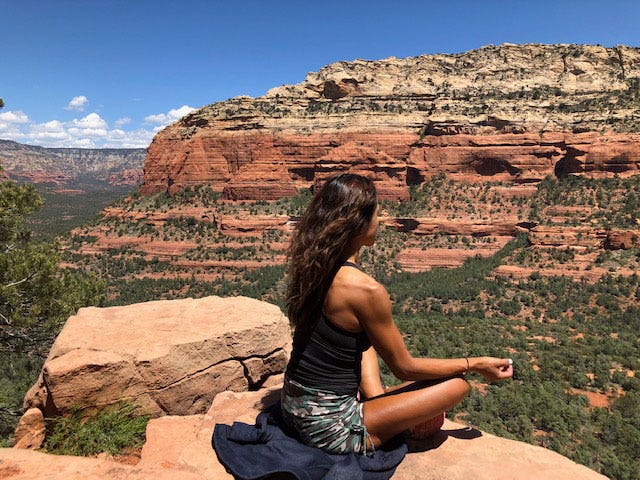
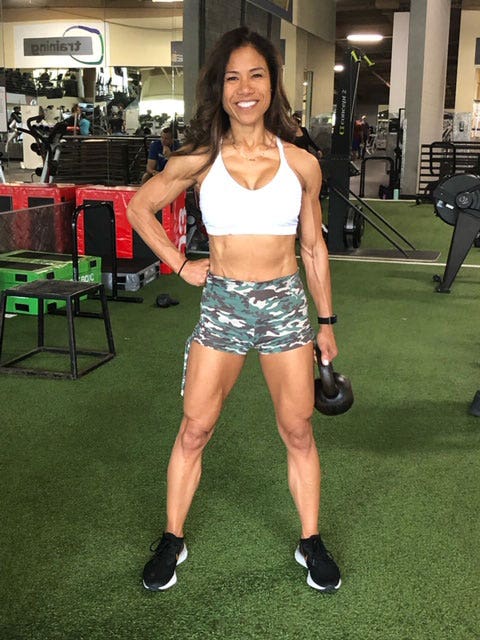
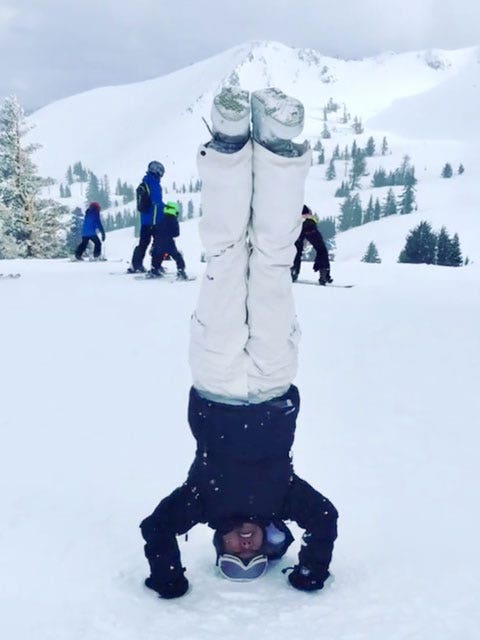
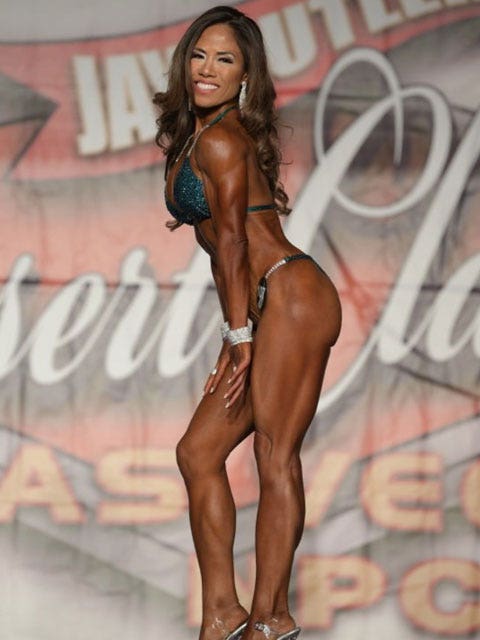
Fun Facts
We think what Kalina Salvador does for herself is great advice for anyone.
Her secret to better sleep:
I put away my phone or put it in airplane mode. I also set Do Not Disturb on my phone so I don’t get any phone calls unless they’re from people on my favorites list, from 9 p.m. until about 5 a.m. No electronics before bed. I meditate in the evenings, drink my tea, and I have a mask to cover my eyes and earplugs.
If I’m having trouble sleeping, I focus on my breath. I put my hands on my belly or on my heart and my belly, and I focus on the breath. And soon enough, I’m super relaxed and I’m off to la-la land.
Her go-to, 24-minute workout:
I’d weight-train and then do something cardio-based. A HIIT workout would be a great way to get the blood flowing. It doesn’t have to be creative or hard. It’s 40 seconds of hard work, 10 to 20 seconds of rest, and if you’re not familiar with a gym or all you want to do is just stay on one machine, you can go on a treadmill. Just sprint for 40 seconds and then do a walk, maybe change the incline—and in 24 minutes, that’s a great workout.
Her approach to failure:
The way I look at failure is it’s a lesson. I’ve learned this in the last two days with my diet as I come off preparation for a bikini competition. You have to slowly introduce foods that you haven’t eaten, and I haven’t been very regimented in my “reverse diet.” If you can look at your failures as lessons to be learned and to move forward and fix and tweak things as needed … you’ll start to learn more about yourself and start to move forward with positivity and get better at what you do.
Video & photo credit: Tom Casey, box24studio.com